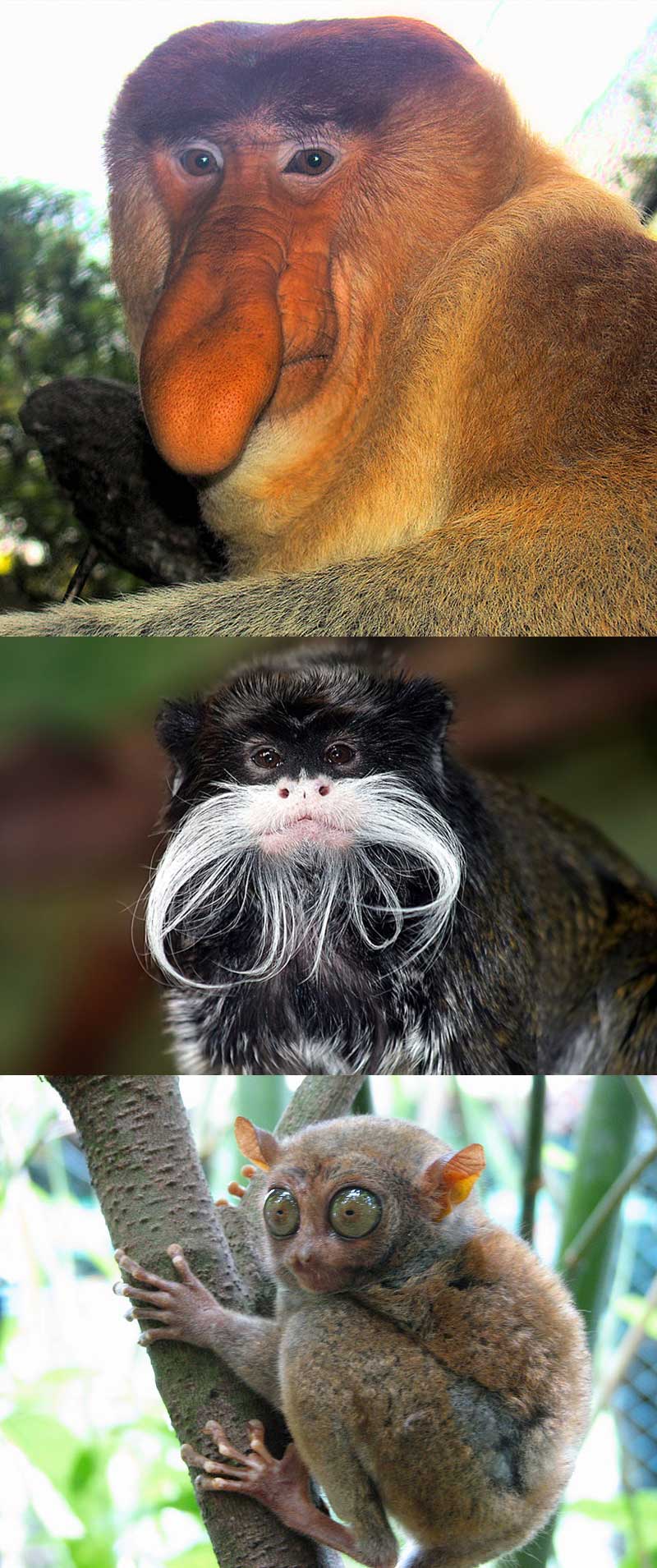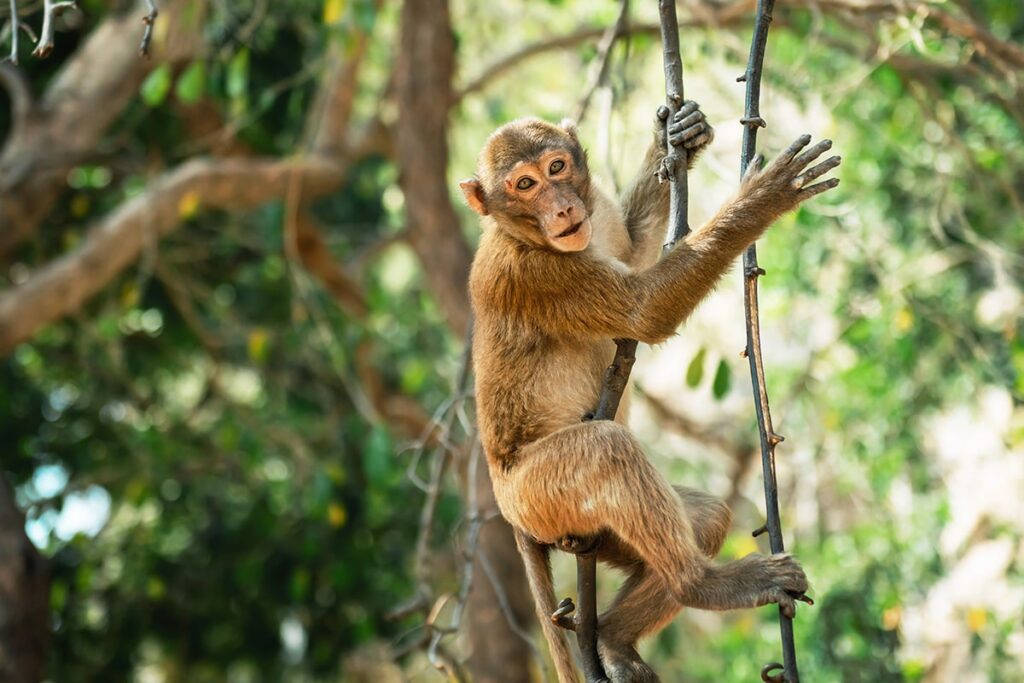- Dominance: Squirrel monkeys (Saimiri boliviensis) sometimes show their dominance by urinating on the dominant monkeys
- Aggression and care: Smiling (pulling up the upper lip to expose the teeth) is a sign of aggression among monkeys. When monkeys groom each other, it’s a sign of care and affection
- Food: Most monkeys eat both animals and plants. Some also eat soil. Monkeys also peel their bananas and don’t eat the peel
- Monogamous ones: Spring monkeys (Callicebus) are rare because they are monogamous. They have the same partner for life and become frustrated when they separate. Spring monkeys often caress their partners and generally spend a lot of time close to each other
- New alpha male: When a pack of marmosets (Cercopithecidae) gets a new leader, in some cases the new alpha male will kill any young that are still suckling. This is an evolutionary behavior where the male protects his own offspring from the offspring of other males
- Snacks: Mandrill monkeys have small ‘pockets’ in their cheeks where they store food to be eaten as snacks
- Howler monkeys: Howler monkeys (Alouatta) are the loudest of all monkeys and apes. Their roar can be heard from over 3 kilometers away in the forest and more than 4 kilometers away in open areas
- But in Europe: The Barbary ape (Macaca sylvanus) is also known as the ‘Gibraltar monkey’ and is the only free-living monkey species in Europe
- Diseases: It is common for monkeys to have tuberculosis, hepatitis and herpes
- Human and monkey food: Humans and some monkey species hunt some species of crested monkeys for food (e.g. red and green colobus monkeys)

Fact: There are 149 different species of monkey; at the top is a proboscis monkey (Nasalis larvatus), in the middle an emperor tamarin (Saguinus imperator) and at the bottom a Philippine tarsier (Tarsius syrichta)
Differences between monkeys and apes
- Primates: Monkeys (Haplorhini) and apes (Strepsirhini) together make up the order Primates. Monkeys are considered to be more highly evolved than apes
- Species: There are 149 species of monkeys (including humans) which are divided into ghost monkeys (Tarsii), western monkeys (Platyrrhini) and eastern monkeys (Catarrhini). There are 48 species of prosimians
- Hale: The most obvious difference between monkeys and apes is that monkeys don’t have a tail (which all apes do)
- The swing: Monkeys and spider monkeys swing from branch to branch using their arms – only a few prosimians do this; they run from branch to branch instead
Facts about the different human species
Great apes is the term for a group of human-like apes that are also genetically relatively closely related to humans. Great apes include: orangutans, gorillas, chimpanzees, bonobos and gibbons.
Orangutans
- Orangutans make a nest in every tree they sleep in. Their young are born in these nests
- Orangutans can live up to 50 years
- Orangutans usually only have one new baby every 6-7 years. The calf stays with its mother until it is 6-7 years old
Gorillas
- Gorillas primarily eat fruit, leaves, bark, termites and caterpillars
- Gorillas can be blue-black to brown-grey
- Gorillas can grow up to 1.7 m tall and weigh up to 165 kg
Chimpanzees
- Chimpanzees use chewed leaves to soak up water (like a sponge) when drinking
- Male chimpanzees can be up to 6 times stronger than an adult human
- Chimpanzees share 98% of their DNA with humans
Bonobos
- Bonobos can live in large groups with more than 100 members
- Bonobos sometimes use sticks to defend themselves
- Bonobos, along with chimpanzees, are our closest living relatives
Gibbons
- Gibbons are the species of great ape that is the least similar to humans. This is especially true physically, but behaviorally, gibbons are also considered less evolved than the other great apes
- Gibbons are masters of swinging between tree branches and can move at up to 55 km/h per hour!
- Gibbons are monogamous (i.e. they only have one partner), which is rare among primates





